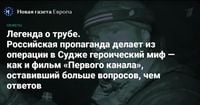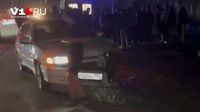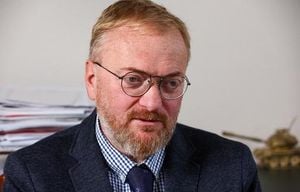On April 19, 2025, Vladimir Petrovsky, a well-known bell ringer from Arkhangelsk, made headlines by participating in the popular game show "Who Wants to Be a Millionaire" on Channel One. Petrovsky, who is also the director of the first Academy of Bell Ringing in Russia, showcased his knowledge by correctly answering ten questions. However, he stumbled on a question about a fable by Ivan Krylov, failing to identify the correct title of the fable that begins with the words: "When there is no agreement among comrades, their affairs will not go well." Instead, he mistakenly chose "The Swan, the Pike, and the Crawfish" instead of the correct answer, which is "The Swan, Pike, and Crawfish." Despite this misstep, Petrovsky reached a non-combustible sum of 100,000 rubles during the show.
Earlier that week, on April 17, Channel One aired a documentary titled "Sudzha. Iron Stream," which detailed a military operation aimed at liberating the Kursk region from Ukrainian Armed Forces (UAF) control. This operation, dubbed "Potok," has been heralded by Russian officials and propagandists as one of the most successful military maneuvers since the onset of the war in Ukraine. Since early March, when Russian forces executed a strategic maneuver, efforts have been made to craft a narrative around the operation's success.
According to RIA Novosti, the operation involved several military units, including the reconnaissance and assault brigade "Veterans," the assault brigade "Vostok," parts of the 11th Airborne Division, the 30th Motorized Rifle Brigade of the 72nd Division, and the Akhmat special forces. The documentary claims that the operation, along with its preparation, took about 100 days. Soldiers reportedly crawled through tunnels measuring approximately 500 meters to reach a gas pipeline, with some needing oxygen tanks due to residual gas.
As the documentary unfolds, it describes how Russian soldiers advanced along the pipeline for 14 kilometers over six days, facing challenges such as a lack of oxygen and water. Alexander Khinshtein, the acting governor of the Kursk region, confirmed these details, emphasizing the physical hardships endured by the soldiers. The Ukrainian side, however, has contested the Russian narrative, asserting that they were aware of the operation and managed to inflict significant losses on the invading forces.
Vladimir Romanov, a military blogger, reported on March 9 about casualties during the operation, stating that many soldiers were poisoned by gas exposure, with some fatalities occurring. On March 17, URA.RU reported on two soldiers from Chelyabinsk who sustained severe injuries during the operation. Evgeny Zaitsev, one of the injured, was hospitalized after suffering from severe poisoning, while Denis Khusainov, who was part of the initial group that navigated the pipeline, also required hospitalization but returned to duty shortly thereafter.
During an interview, the commander of the Akhmat special forces, known by the call sign "Aida," revealed that soldiers were only informed about the operation's details a mere four hours before it commenced. This last-minute briefing raised questions about the operational secrecy purportedly surrounding the mission. The documentary features footage showing soldiers of varying ages and fitness levels struggling within the pipeline, with some collapsing due to the lack of air.
Russian military experts, however, have expressed skepticism regarding the significance of the "Potok" operation. Some argue that it began too late, as the Russian army had already driven Ukrainian forces from their positions in Sudzha by the time the operation launched. According to an anonymous Russian military expert, the operation's timing was questionable, given that Ukrainian troops had already begun to withdraw from the area to avoid encirclement.
Despite the skepticism, Kremlin-controlled media have been actively promoting a heroic narrative around the "Potok" operation, producing documentaries and organizing exhibitions to celebrate the event. On April 11, an art installation symbolizing the gas pipeline was unveiled in Kursk, and plans are underway for exhibitions featuring photographs and personal belongings of the operation's participants. In Yekaterinburg, a replica of the gas pipeline was erected, allowing visitors to experience the conditions faced by Russian soldiers.
As the narrative continues to evolve, questions remain about the operation's actual outcomes and the accuracy of the reported figures. The head of the General Staff of the Russian Armed Forces, Valery Gerasimov, claimed that over 600 stormtroopers participated, while other sources suggest that around 820 soldiers traversed the pipeline. The documentary states that more than 800 soldiers were involved, but discrepancies in reported numbers raise doubts about the true scale of the operation.
Furthermore, the documentary's portrayal of events has been criticized for its lack of transparency. Many have questioned why Channel One waited so long to release the film, particularly when similar projects had already been produced by other outlets. The chaotic presentation of footage and the absence of conclusive evidence regarding the operation's success have led to speculation about the actual impact of the "Potok" maneuver.
As the situation develops, the Russian military's portrayal of the "Potok" operation serves to reinforce a growing mythos around military successes, even as independent analysts and journalists continue to probe the veracity of these claims. The ongoing conflict in Ukraine remains a complex and multifaceted issue, with narratives from both sides shaping public perception and understanding of the events unfolding on the ground.







